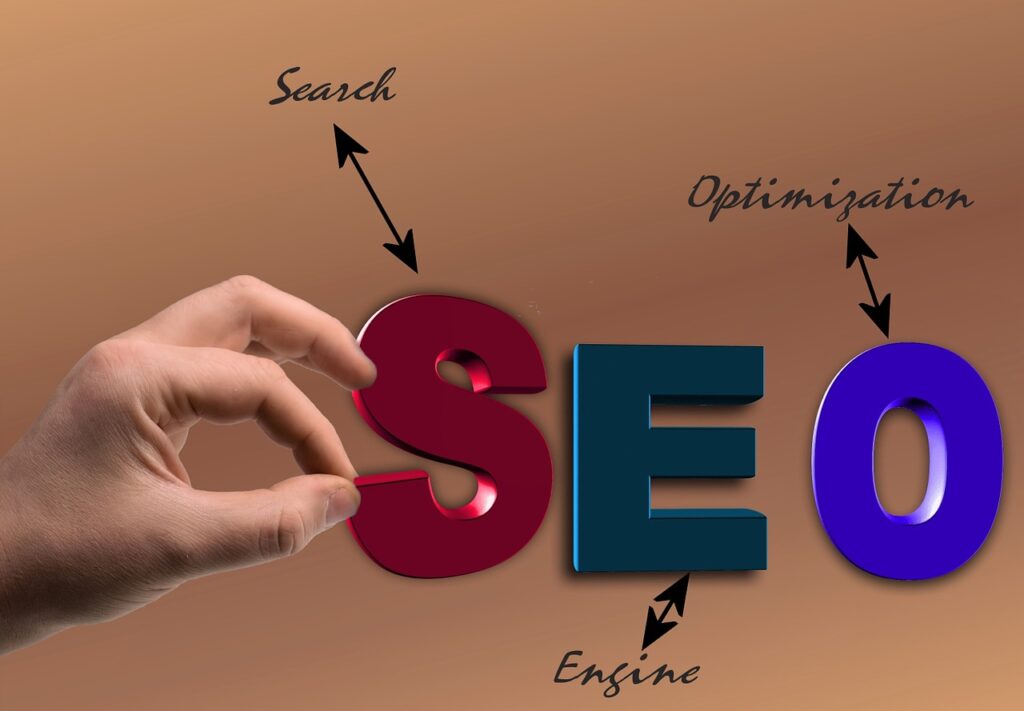SEO is vital because it helps you attract more organic traffic to your website. This means that people actively searching for the products or services you offer are more likely to find your website and potentially become customers. By ranking higher in search results, you can also build trust and authority with your target audience. Our beginner’s guide to SEO discusses how to get started right.
Search engine optimization (SEO) is optimizing your website and content to rank higher in search engine results pages (SERPs). Improving your website’s visibility can attract more organic traffic and ultimately grow your business.
SEO involves optimizing various aspects of your website, such as its content, structure, and performance, to make it more appealing to search engines like Google. The ultimate goal is to improve your website’s ranking in search results, making it more visible to potential visitors.
Search engines use complex algorithms to determine which websites to display in their search results. SEO involves optimizing your website and content to align with these algorithms and improve your website’s relevance and authority. Various factors influence how search engines rank websites, such as keywords, backlinks, and user experience.
Getting Started with SEO
Keyword Research
Keyword research is identifying the right keywords to target in your website’s content. Choosing the right keywords can improve your website’s relevance and visibility in search results.
- Finding the right keywords: Start by brainstorming potential keywords related to your business or industry. Use tools like Google Keyword Planner or Ahrefs to see how often these keywords are searched and how difficult it is to rank for them.
- Understanding keyword intent: Consider the intent behind each keyword you target. Are people searching for information, products, or services? Tailor your content to match their intent.
- Using long-tail keywords: Long-tail keywords are longer, more specific phrases that are easier to rank for and often have higher intent. Include long-tail keywords in your content to attract more targeted traffic.
On-Page Optimization
On-page optimization refers to optimizing the content and structure of your website to improve its relevance and user experience.
- Creating high-quality content: Publish content that is informative, engaging, and relevant to your target audience. Use your target keywords naturally throughout your content.
- Optimizing title tags and meta descriptions: Title tags and meta descriptions are HTML elements that appear in search results. Optimize them to include your target keywords and entice people to click through to your website.
- Using header tags: Header tags (H1, H2, H3, etc.) help organize your content and make it easier to read. Use them to structure your content and include your target keywords.
- Image optimization: Optimize your images by using descriptive file names and alt tags. This can help improve your website’s relevance for image searches.
- Internal linking: Link to other relevant pages on your website to improve your website’s structure and user experience.
Off-Page Optimization
Off-page optimization refers to activities that take place outside of your website to improve its relevance and authority.
- Building high-quality backlinks: Backlinks are links from other websites that point to your website. Focus on building high-quality, relevant backlinks to improve your website’s authority.
- Social media promotion: Promote your content on social media to attract more visitors and build your brand.
- Local SEO: If you have a local business, optimize your website for local search by including your business name, address, and phone number on your website and in online directories.
Technical SEO
Technical SEO refers to optimizing the technical aspects of your website to improve its performance and user experience.
- Site structure and navigation: Ensure your website is easy to navigate and has a clear hierarchy. Use internal linking to connect pages and create a logical flow.
- Mobile optimization: Optimize your website for mobile devices to improve its user experience and visibility in mobile search results.
- Page speed and performance: Improve your website’s speed and performance by optimizing images, minifying code, and using a content delivery network (CDN).
Measuring SEO Success
Let’s move to the next point of out beginner’s guide to SEO. Measuring SEO success involves setting goals and KPIs, monitoring and analyzing your website’s performance, and using tools to track your progress.
A. Setting goals and KPIs: Identify what you want to achieve with your SEO efforts and set specific, measurable goals and KPIs.
B. Monitoring and analyzing SEO performance: Use tools like Google Analytics and Google Search Console to monitor your website’s performance and track your progress.
C. Tools for tracking SEO success: Use tools like Ahrefs, SEMrush, and Moz to track your rankings, analyze your competition, and identify areas for improvement.
Conclusion on Beginner’s Guide to SEO
In conclusion, SEO can be a powerful tool for attracting more organic traffic and growing your business. Start by conducting keyword research, optimizing your content and structure, building high-quality backlinks, and monitoring your progress. With time and effort, you can achieve higher rankings and attract more targeted traffic to your website. We hope you will find our beginner’s guide to SEO helpful for your successful start.


